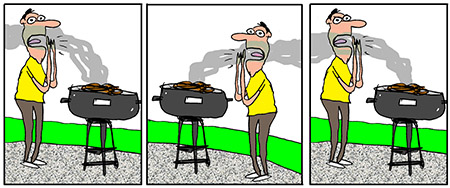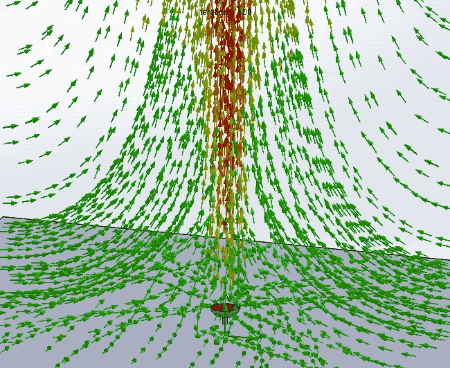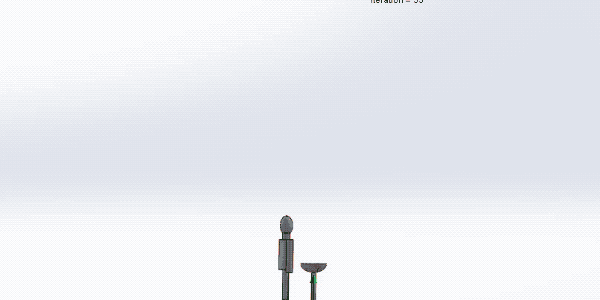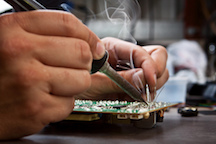| g e n u i n e i d e a s | ||||||
 |
 |
 |
 |
 |
 |
 |
| home | art and science |
writings | biography | food | inventions | search |
| smoke gets in your eyes |
| May 2018 |
|
Magic? Static electricity? An evil poltergeist? Exactly why does a plume of smoke, rising gently above a fire, stick tenaciously to your face? Why does smoke follows you relentlessly, burning your eyes and choking your every breath, no matter which side of the fire you stand on? (cartoon courtesy of amazingribs.com) The answer is less supernatural than fluid dynamical, involving just three pieces of physics. The short answer is quite simple:
To illustrate the role of these three contributions, I modeled an innocent backyard chef standing next to a hot grill in a fluid-dynamics software simulator. The baseline scenario is an unattended grill. Warm air rises, and as it flows upward, colder air from the surrounding yard rushes in to replace the missing volume. Which creates a column of hot air, symmetrically aligned above the grill1. Along-side this rising plume are circulating "cells" of colder air that cascade back to the ground as the rising column cools.
(arrows indicate flow direction and colors vertical velocity
What happens when you stand next to the fire? Well, your body blocks airflow from that side, which would normally join the rising column. This means air, pushing in from the opposite side is unbalanced, forcing the the column of air to bend slightly towards the blockage. If you look closely, you can see the column of air is tilted slight towards the head. This is the Coanda Effect2.
Again, an "eye level" slice of the airflow more clearly illustrates the bend. The center column of rising air is clearly displaced towards the blocking body. This force diverts smoke closer to the face. In addition, a vortex of air is spun off of the body and neck (in this case, near the right cheek), circulating smoke right into your line of sight. Annoying to say the least.
Vortices occur whenever a fluid passes by a wall's edge. The air stream moves faster around the wall because air is squeezed between the blocking surface and the stagnant distant air. This higher speed stream bends around the arc via the Coanda effect, hits the fluid in the wake of the surface at an angle, and (once freed from the wall's edge) curves around into a complete circle. This animation illustrates vortex "shedding" when air passes over an elliptical rod. Note how the two streamlines nearest the surface bends inward, the one nearest the surface throwing off a pair of vortices.
(color indicates the velocity in the vertical direction) Smoke does not really have a mind of its own, but simply follows the laws of fluid dynamics. More enchanting than enchanted.
|
|
--------------------------------------------------------------------------------------------------------
1 You may have noticed the hot air in the simulated fire is rising faster than the surrounding cold air. The 2 In the Coanda Effect, a blocking wall causes a parallel stream of moving air to press against the surface. If the surface "gently" bends into an arc, this pressure "attaches" the air-stream to the surface, and it follows the curve. If the bend is too abrupt, the airflow "detaches" from the surface and forms a turbulent wake. Airplane wings are designed to avoid detachment before the flow reaches the trailing edge of the wing. Those of you who wield a soldering iron are all too familiar with the annoying tendency of solder fumes to choke your nose and cling to your hair. |
 Contact Greg Blonder by email here - Modified Genuine Ideas, LLC. |






